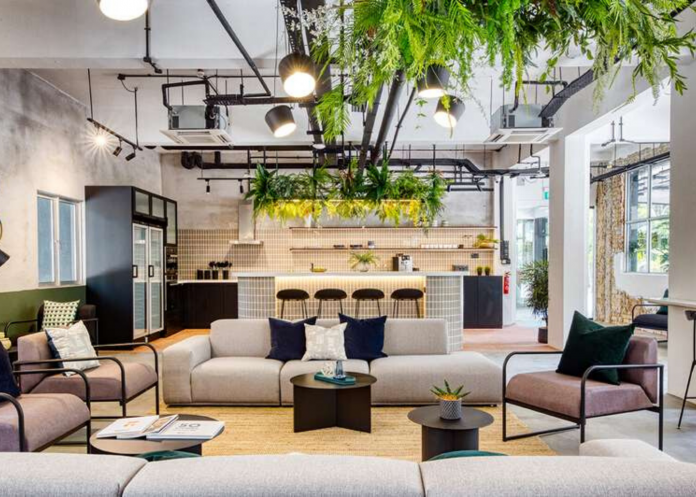
By Guest Author: Aana Zaady
The world is getting populated. The size of the earth remains precisely the same. 55% of the world’s population lives in urban cities and expected to increase to 68% by 2050.
The growing demands to create space combined with refined lifestyle needs are enormous issues. Where do we find a solution for this? The resounding tested, and the proven answer is the co-living phenomenon.
Co-living is interpreted in many ways that are far from what it is. Thus, the real estate industry has been predominantly expensive. It is creating a massive gap between landlords and people looking for affordability and sustainability.
Co-living is not just shared living. It is not dormitory or hostel living, nor is it student dormitory-style apartments with gyms, eateries, or swimming areas.
Co-living homes are more than just shared living spaces.Community building is vital in the homes to create, harmonious environment by bringing individuals together to build a supportive and diverse community.
Co-living homes are shared homes aimed for affordability and sustainability. And creating sustainable homes is more important in this Generation more than ever; to develop shared communities that help create a support network for jobs, collaborations, and renting more extended periods significantly and even for life.
The significance of co-living

When COCID-19 seized the world, the most resilient housing sector have been co-living, globally, and in the Asia Pacific region. Demand for looking for spaces to have a safe, and affordable home, spiked on an overwhelming level Groups such as The Weave allocating SGD359M in Singapore, during the lockdown, is proven that co-living is a tested and proven model for the Next Generation of living.
Many operators in the market still are new, and testing boundaries.

Photo: Ariel View of Hulhumale’
Urban cities such as Male’ often have “matchbox size” units that are in undesirable quality and size and extremely expensive. With the current living models, they create social and economic problems that are hard to solve with the existing housing systems.
A studio flat is a little out of reach for the vast majority of graduates and young professionals on entry-level salaries. Even if it was within reach financially, the questions are: Is it sustainable to force people into tiny spaces? Is it economically, socially sustainable for entry-level workers to rent out from these current living spaces for their life? Is it a realistic long-term solution?
What tech can bring to the housing crisis

The co-living industry and its pioneers have the next Generation mindset. Therefore, Technology, AI, and AR are massively used in property management solutions in most of the co-living projects. As it is proven, Technology and AI can solve a big problem here, because AI can take house-sharing beyond scrolling through an endless list of bedrooms, signing tenancy agreements based on hope and crossing your fingers for friendly flatmates. There are existing AI solutions that pair people to house shares based on lifestyle preferences and personality to create house shares that become long-term, functional homes.
Technology creates a stable ship with consistent returns for landlords, while this provides the opportunity to have a home, rather than a room for tenants —a win-win for both landlords and tenants.
While some of us are more social than others, we are ultimately social creatures that need interactions and care to feel happy. For people moving from further afield, a lonely house share can lead to unhappiness, which impacts our mental health and our productivity amongst a multitude of other things.
On the flip side, a house share full of friends offers a stable foundation for us to build happy lives in, whether we were born in the city or came from further away. These are missions to finish the days of spare rooms by providing a hassle-free, secure, and reliable rental service.
With this refreshed approach, we can bring like-minded people together rather than just allocating people to spaces.
We urgently need to create more co-living options for people living around the world, to suit all budgets and lifestyles, and tech is the only way to make supply meet demand.
The supply of urban housing is scarce worldwide: 54% of the world’s population of 7.2 billion live in cities, and by 2050, this is expected to increase to 66% of a predicted world population of 9.6 billion – according to data taken from the United Nations global urbanization report.
One of the solutions co-living platforms are developing is to offer ways to create properties specifically for functional, practical, and homely co-living. And perks of a home are the people you live with, rather than having your bedding changed once a week by a ghost cleaner.
People are the most crucial part of any economy and essential to the country’s development. Urban cities have become unaffordable around the world.
Housing is becoming increasingly expensive across the world. More people continue to rent for the long term. Therefore, affordable housing is not just a consumer product or a lifestyle; it’s a critically important piece of national infrastructure, and a key to economic options for tens and millions of people who are looking for an affordable/sustainable living environment.
Co-living is an indispensable part of making a living an achievable goal for the Next Generation and Sustainable for the increasing urban populations.

About the Author: Aana Zaady is the Co-founder of Rouf, co-living based in Singapore .She is also an ambassador of Singapore to international co-living industry Colive.













